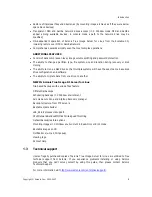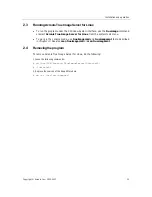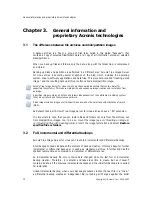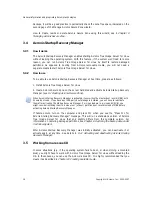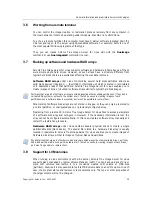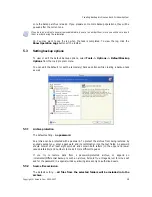
General information and proprietary Acronis technologies
Copyright © Acronis, Inc., 2000-2007
15
3.6
Working from a remote terminal
You can control the image creation or restoration process remotely from any computer in
the local network or Internet, operating under Windows, Mac OS or any UNIX clone.
To act as a remote terminal, this computer must have X Server software installed. Start the
X Server and log on to the server using SSH-enabled software. For example, Putty is one of
the most popular Windows programs of that type.
Then you can invoke Acronis True Image Server for Linux GUI with the
trueimage
command or use
trueimagecmd
command line tool.
3.7
Backing up software and hardware RAID arrays
Acronis True Image Server for Linux supports software and hardware RAID arrays as if these
were simple single hard drives. However, as such arrays have a structure different from
typical hard disks, there are peculiarities affecting the way data is stored.
Software RAID arrays
under Linux OS combine several hard disks partitions and make
solid block devices (/dev/md0, ... /dev/md31), information of which is stored in /etc/raidtab
or in dedicated areas of that partitions. Acronis True Image Server for Linux enables you to
create images of active (mounted) software arrays similar to typical hard disk images.
Partitions that are part of software arrays are listed alongside other available partitions as if they had a
corrupted file system or without a file system at all. There’s no sense in creating images of such
partitions when a software array is mounted, as it won’t be possible to restore them.
Parameters of software disk arrays are not stored in images, so they can only be restored to
a normal partition, or unallocated space, or previously configured array.
Operating from a rescue CD, Acronis True Image Server for Linux tries to access parameters
of a software disk array and configure it. However, if the necessary information is lost, the
array cannot be configured automatically. In this case, create a software array manually and
restart the restoration procedure.
Hardware RAID arrays
under Linux combine several physical drives to create a single
partitionable disk (block device). The special file related to a hardware disk array is usually
located in /dev/ataraid. Acronis True Image Server for Linux enables you to create images of
hardware disk arrays similar to images of typical disks and partitions.
Physical drives that are part of hardware disk arrays are listed alongside other available drives as if they
had a bad partition table or no partition table at all. There’s no sense in creating images of such drives,
as it won’t be possible to restore them.
3.8
Support for LVM volumes
When running in Linux environment with 2.6.x kernel, Acronis True Image Server for Linux
supports disks, managed by Logical Volume Manager (LVM). You can back up data of one or
more LVM volumes and restore it to a previously created LVM volume or MBR disk
(partition), likewise it is also possible to restore MBR volume data to an LVM volume. In each
case, the program stores and restores volume contents only. The type or other properties of
the target volume will not be changed.









